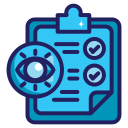Choose the Right Visual Language and Tooling
Use BPMN to clarify process states and handoffs, UML to explain structure and interactions, story maps to reflect product slices, and journey maps to surface emotions. Mixing notations is fine if each serves a clear, explained purpose.
Choose the Right Visual Language and Tooling
A simple style guide saves hours and prevents misreads. Define colors for systems, people, and data; shape conventions for actions and decisions; and page templates with legends. Subscribe to receive a ready-to-use, colorblind-safe template pack.



